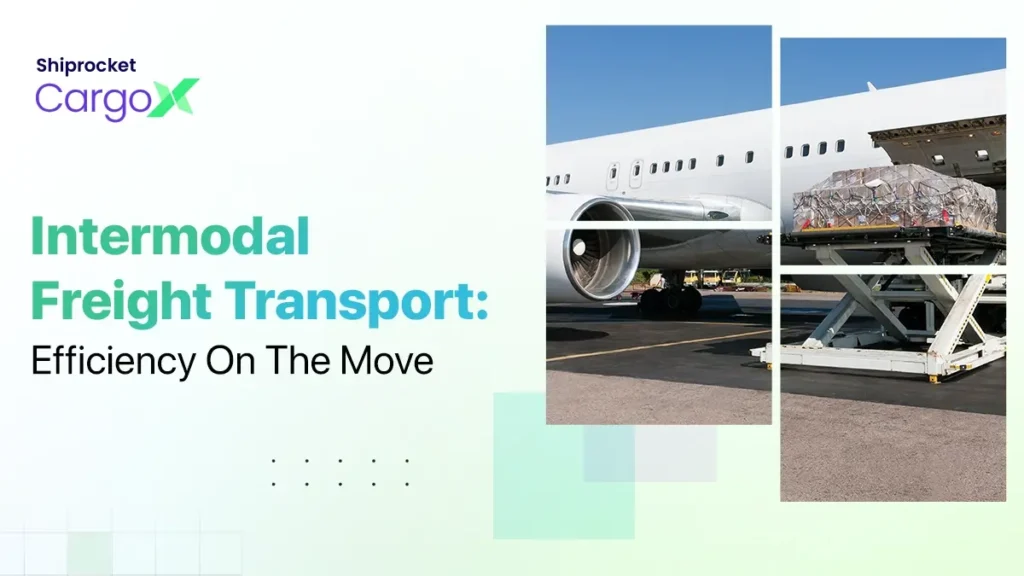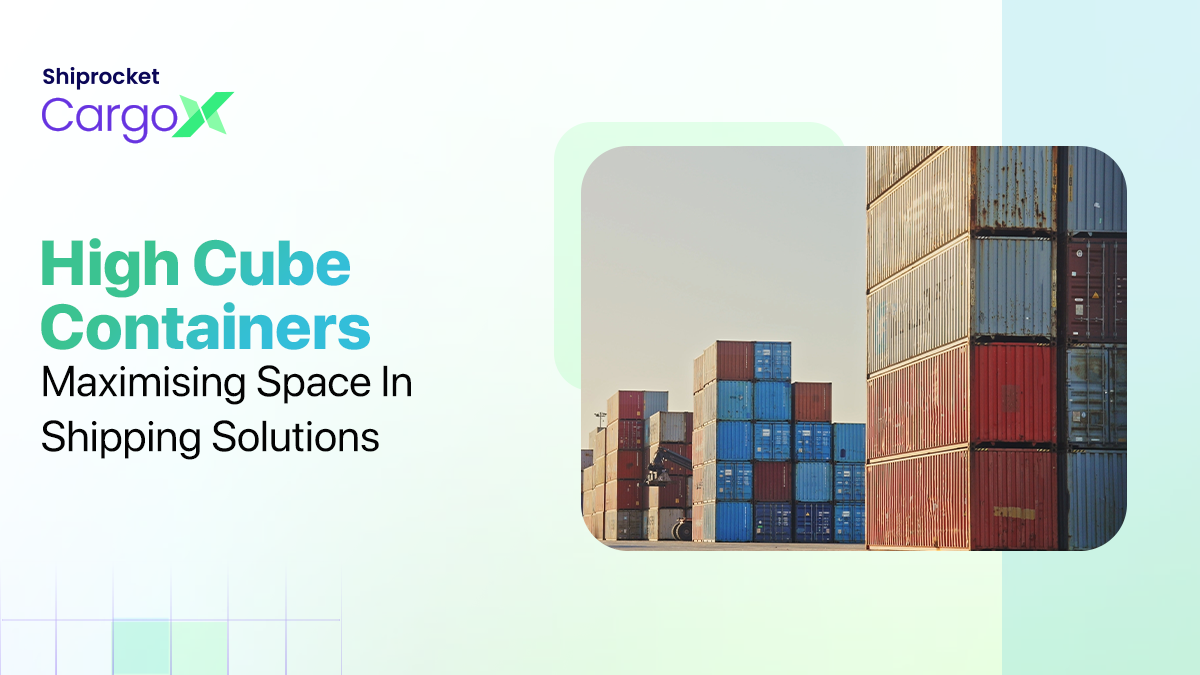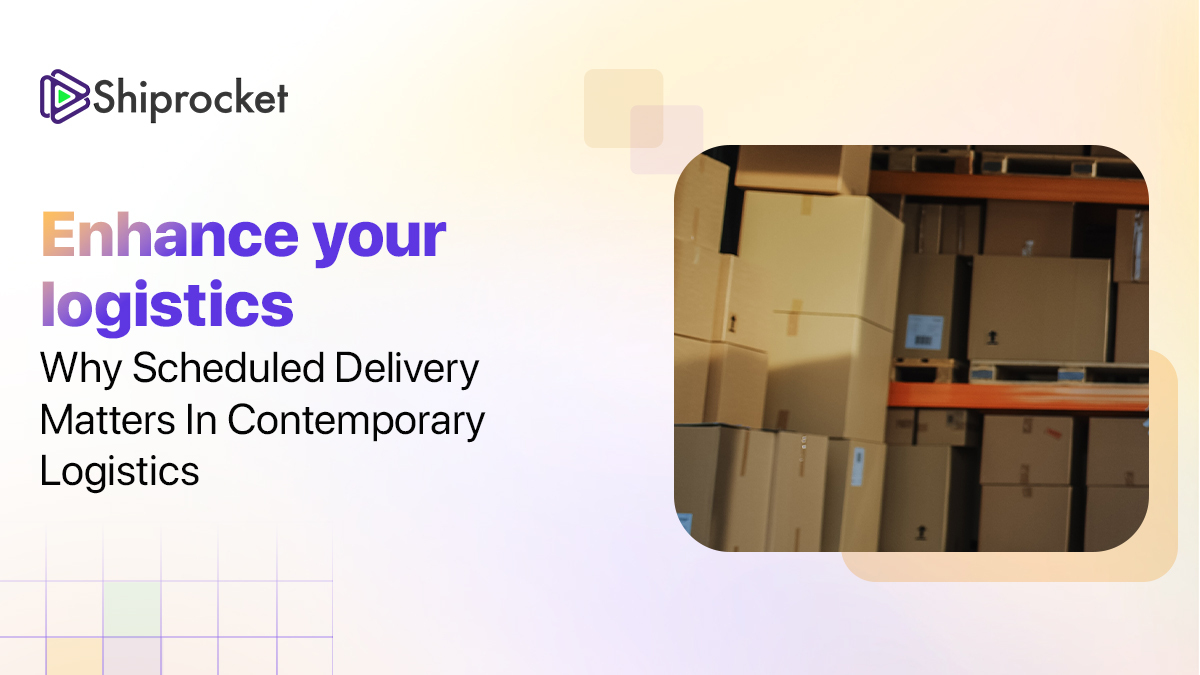Intermodal Freight Transport: A Comprehensive Guide
- What Is Intermodal Freight?
- Pros of Intermodal Freight Transport
- Cons of Intermodal Freight Transport
- Step-by-Step Guide to Intermodal Shipping
- Historical Evolution of Intermodal Transportation
- Role of ISO Containers in Intermodal Freight
- Modes of Transportation in Intermodal Freight
- Benefits of Intermodal Transportation
- Conclusion
Do you want to speed up your shipping process? In that case, intermodal freight transport may be the best option. The complexities of intermodal transportation may baffle you, but in reality, it’s a simple concept. It means transporting shipments in a freight container using more than one mode of transport, like rail and road combined.
There are four main modes of transportation: rail, road, sea, and air. You can move your shipments using one or more of these routes. Road transport is usually managed by trucks, which are the first to pick up goods. They even help process intermodal shipping between transits through rail, ocean, or air. Trucks can also be the last mode of transport when the shipment reaches the final destination.
Rail transport involving trains is an even more beneficial form of transportation within intermodal transportation. You can move hundreds of freight containers across long distances with low transportation costs. However, the only potential ways to transport your goods across borders are through air and sea.
It’s important to understand the workings of intermodal freight transport to leverage your business. This article will shed light on the benefits and challenges of using intermodal freight transport.

What Is Intermodal Freight?
Intermodal transport means moving goods in the same load unit, such as containers, swap bodies, or semi-trailers, using two or more modes of transportation without any direct handling of the products during the transit.
For instance, during intermodal transport, a container carrying the goods gets transferred from one transportation mode to another, such as trains, ships, trucks, or planes, without placing the products in another unit or removing them. It’s an integrated and flexible logistics solution for businesses that are seeking a more efficient and streamlined supply chain.
Containers or other load units designed for intermodal freight transport often comply with (ISO) International Organization for Standardization dimension guidelines. These instructions allow the freight to stay in the same container while these containers move between different transportation modes.
Pros of Intermodal Freight Transport
Wondering about the advantages intermodal freight transport brings? Here are some of the benefits of using two or more transportation modes for shipping purposes:
More Efficiency in Supply Chain: Intermodal freight transport eliminates the need for additional cargo handling. The use of different vehicles reduces downtime and enhances efficiency throughout the supply chain.
Cost-effectiveness: Intermodality can significantly reduce your transport costs when you’re shipping huge volumes of cargo. You pay less per load unit, which further diminishes the cost per ton transported.
Higher Security: Keeping your cargo in one container or load unit throughout the shipping journey minimises the risk of any theft and damage to your products. Constant loading and unloading of the products into different load units need more manpower. Your shipment could be mishandled, damaged, or stolen in between the transit.
Sustainable Option: Intermodal freight transport is among the most effective sustainable logistics solutions. This type of transportation manages resources better and hence minimises the environmental impact. For instance, it leverages the efficiency of rail for long distances and trucks for last-mile delivery, which ensures lower fuel consumption and reduction in greenhouse gas emissions. It also alleviates road congestion and enhances load capacity, creating more fuel efficiency.
Cons of Intermodal Freight Transport
Intermodality comes with a few challenges along with the many advantages it serves. Here are the disadvantages of adopting intermodal freight transport:
Sensitive to Weather Conditions: Bad or unmanageable weather can slow down all modes of transport used in intermodal freight transport. Storms, heavy rains, and other unpredictable weather conditions can easily affect land, water, and air transportation routes. Ocean transport suffers especially when there are environmental hazards. Violent storms in the sea can not only stop ships but even damage the freight they’re carrying.
Risk of Disease: As most of the ISO containers are not temperature regulated, they may be a breeding ground for pests. These organisms can travel out of the containers and infect new ports. These cargo vessels may also become a ride for many invasive species to travel between ecosystems.
Damage Probability: The contents stay for a long period inside the same container without anyone opening or checking it, so they may get damaged and go unnoticed. Usually, the personnel move these shipments around quickly, and this may lead to jerky movements causing damage to the parcels.
Step-by-Step Guide to Intermodal Shipping
Intermodal freight transport is broadly categorised into two shipment modes: domestic intermodal (by rail) and international intermodal (by ship)
The products stay put in the same load unit for the whole journey, except in a few cases. The cargo transported through rail can be transloaded to a different load unit or container, split-loaded into multiple trucks or containers, or reworked in the railyard due to improper securement of cargo.
International Intermodal Freight Transport
When it comes to international intermodal shipping, the freight goes into 20-ft or 40-ft containers and is then moved using trucks and sea carriers. The cargo lies in the same container throughout the transit until it shows up at the final location.
But how does the cargo move in international intermodal freight transport? A usual freight movement cycle begins with a truck picking up a shipping container from the shipper’s warehouse and hauling it to a port. As this container lands at its destination port or railyard, a second truck takes it to the consignee’s warehouse, which is its final stop.
Here’s how intermodal shipping via ship works:
- The concerned personnel load the products into the container
- They then place the container on the chassis of a truck
- After that, the truck hauls the container to the drayage (intermodal ramp)
- The personnel then take the container off the truck chassis at the ramp and load it onto a lined-up ship
- The freight container can be loaded onto another truck chassis as it arrives at the destination port. It can then be moved to the consignee’s storage facility.
Domestic Intermodal Freight Transport
In domestic intermodal shipments, the freight moves in a 53 ft container through rail. Sometimes, the containers arrive in 20 or 40 ft load units via international intermodal, and hence, they need to be shifted to 53-foot rail containers for domestic travel.
This load then passes through transloading and cross-docking and finally to the distribution facility. When it reaches its inland destination, the cargo is labelled as domestic intermodal.
If the freight needs to travel further by rail before reaching its final destination, it’s transloaded into a 53 ft railcar.
Here’s the step-by-step movement of domestic intermodal shipments by train:
- At the transloading facility, the shipping personnel loads the cargo into a 53-foot railcar. This loading can take place at a cross-docking or rail distribution facility near the port.
- After the loading, the cargo then moves to the intermodal rail yard nearest to the shipment’s end destination.
- The personnel then offload the container onto a truck chassis at the yard, or they further load or split-load into containers of different sizes. The trucks then carry these containers to the consignee’s warehouse.
Historical Evolution of Intermodal Transportation
To have a clear picture of the benefits of using intermodal freight transport, it’s important to go through its history and evolution over time.
The intermodal freight transport showed up in the early 1950s when gateways to international trade markets opened, and the need for efficiently transporting bulk goods became prominent. During World War II, US military personnel created elevated wooden bases called pallets to safely carry and transport goods. The pallets effectively reduced handling times, as well as protected the products from damage. Word-of-mouth about the effectiveness of using pallets spread like wildfire. However, intermodal freight transport was yet to take full shape.
In 1956, Malcolm Mclean, an entrepreneur, came up with a revolutionary breakthrough. He thought loading the entire truck directly onto the cargo vessel was a good idea? This is how modern shipping containers came to life, with a better and faster loading and unloading system. It was then that the revolutionary entrepreneur realised the enormous potential of intermodal freight transport.
Role of ISO Containers in Intermodal Freight
The actual win-win, however, was never the containers themselves. It was the concept of getting all the transportation components to intermingle with the containers. In 1967, the (ISO) International Organization for Standardization declared a standard for containers, popularly known as ISO containers for intermodal freight transport.
These containers have specific dimensions and a numbering system using codes that enable quick identification. As time lapsed and intermodal freight transport evolved, the organisation added new types of ISO containers, like refrigerated tank containers. These additions further helped modify and improve intermodal freight transport.
Modes of Transportation in Intermodal Freight
There are four standard ways of conducting intermodal freight transport: rail, road, sea, and air routes. However, all these modes work differently in the countries that use intermodal cargo transport.
Rail
Rail transport uses railroad tracks for the movement of goods in large quantities. It has the potential to transport items across distant ports rapidly, where huge cranes are on standby to transmute the loads to trucks.
Currently, rail intermodal mostly employs the standard 20-foot-long containers. However, in many cases, it uses the other four types of containers to ship in larger volumes. Rail intermodal is more popular in Asia than in other markets in the world, although it performs well in the United States and Europe, too.
In the US, they use double-stacked well cars that double the loading capacity and enhance the overland shipping efficiency in collaboration with rail and truck networks. Many logistics and supply chain companies provide these and bypass traffic-related delays.
On the other hand, the European Union is advocating a shift towards rail transport in an attempt to lessen their current dependence on trucks for land transportation. This is an effort to diminish the carbon footprint. Unlike the US, European countries like the UK employ flat cars that accommodate only a single layer of 20-foot containers. It limits their freight capacity as compared to the double-stacked options available in American rail transport.
Cargo Ships
Cargo ships are the easiest and most versatile way to transport your goods. They utilise the sea, river, canal, and ocean routes to move the freight across major ports domestically and internationally. The cargo ships use two typical container sizes for shipping owing to their high capacity: 20 ft and 40 ft long containers.
These cargo vessels account for a huge share of global shipping. In 2021, they shipped nearly 1.95 billion metric tons of cargo globally, which is 0.1 billion metric tons more than in 1980.
In the US, cargo ships sail on the Mississippi River and the coasts. They often travel between the West Coast, Japan, and China to transport freight across the three countries. Freight also moves to the Gulf of Mexico from northern ports on the East Coast.
In the European Union, ships create most of the intermodal transportation traffic, specifically on the Rhine and Danube rivers. These water bodies enable shipping between many countries and freight transfer among vessels as they go forward to the North and Black Seas.
Cargo Aircraft
Aircraft are one of the fastest intermodal freight transport systems. The demand for air cargo has surged by nearly 1.5% over the past few months. It’s the first year-on-year air cargo growth in 19 months.
The US market uses air cargo intermodal for urgent freight. Many of the European countries ship their items in passenger plane bellies. They also often utilise smaller freight containers to fit in planes.
Trucks Intermodal
It’s the easiest way to transport goods, considering all the other intermodal freight transport modes. However, trucks are also not that efficient in transporting large numbers of containers. Although they can usually carry only a single container, they can fit in containers of all sizes. Shipments sent by trucks can overland on roads, highways, and streets.
Trucks transport nearly 72.6% of the USA’s freight by weight. The country is a major shipping sector, and many logistics companies facilitate this enormous volume of transport.
Europe is no less. In 2021, the nation shipped freight worth more than a trillion tons. Trucks are the most frequently used mode of intermodal freight transport on the continent.
Benefits of Intermodal Transportation
After learning about the intricacies of intermodal freight transport, let’s view the benefits of using it:
Cost Cutting
Intermodal freight requires fewer dockers to scrutinise the packages inside the containers or unload and reload the container freight. It eliminates the added costs and saves more time for shippers and receivers.
Alleviating Climate Change
The sustainability factor takes a front seat when using intermodal freight transport, as it promotes fuel efficiency and reduces carbon footprint. It cuts down the environmental impact since it transports huge cargo utilising less fuel compared to single-mode transportation, which consumes a lot of fuel.
Ability to Track
With the use of advanced technology and standard marked containers in intermodal freight transport, it becomes easier to calculate the estimated arrival dates. Moreover, you can conveniently track the containers, monitor the freight movement, and take relevant measures to speed up the shipping process.
Conclusion
Intermodal freight transport is an exceptional solution to address the complex issues that arise in international shipping. It reduces the need for extensive cargo handling that is usually required during the regular shipping journey and reduces cargo handling costs. It’s also a more eco-friendly option for shippers. However, a drawback to intermodal freight transport is that it requires a proper outlay of infrastructure costs to function efficiently. The use of intermodal freight transport is likely to gain more popularity in the coming years because of its cost benefits for shippers. Before adopting this mode of transport, you must contact 3PL or 4PL service providers.




